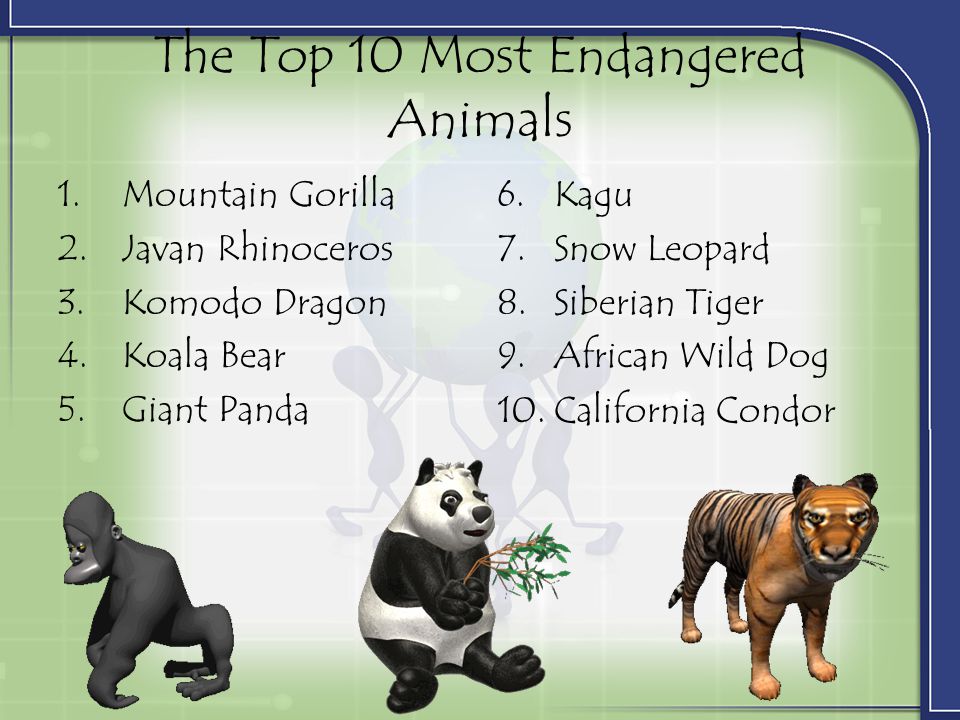Top 10 Endangered Animals Facing the Brink of Extinction
Introduction: In our interconnected world, maintaining a delicate balance in the ecosystem is crucial for a sustainable and fulfilling life. Unfortunately, many species, both plants and animals, are under threat due to human activities causing habitat loss and exploitation. This article highlights the top 10 endangered animals that urgently require attention and conservation efforts.
- Giant Panda (Ailuropoda Melanoleuca):
- Tiger (Panthera Tigris):
- Vaquitas:
- Amur Leopard:
- Whooping Crane (Grus Americana):
- Sea Turtles:
- Rhinos:
- Gorillas:
- Saola:
- North Atlantic Right Whale:
Conclusion: Preserving biodiversity is crucial for a healthy planet. These ten endangered species emphasize the urgent need for global conservation efforts to protect our natural heritage. By raising awareness and implementing effective conservation strategies, we can strive to ensure the survival of these remarkable creatures.

